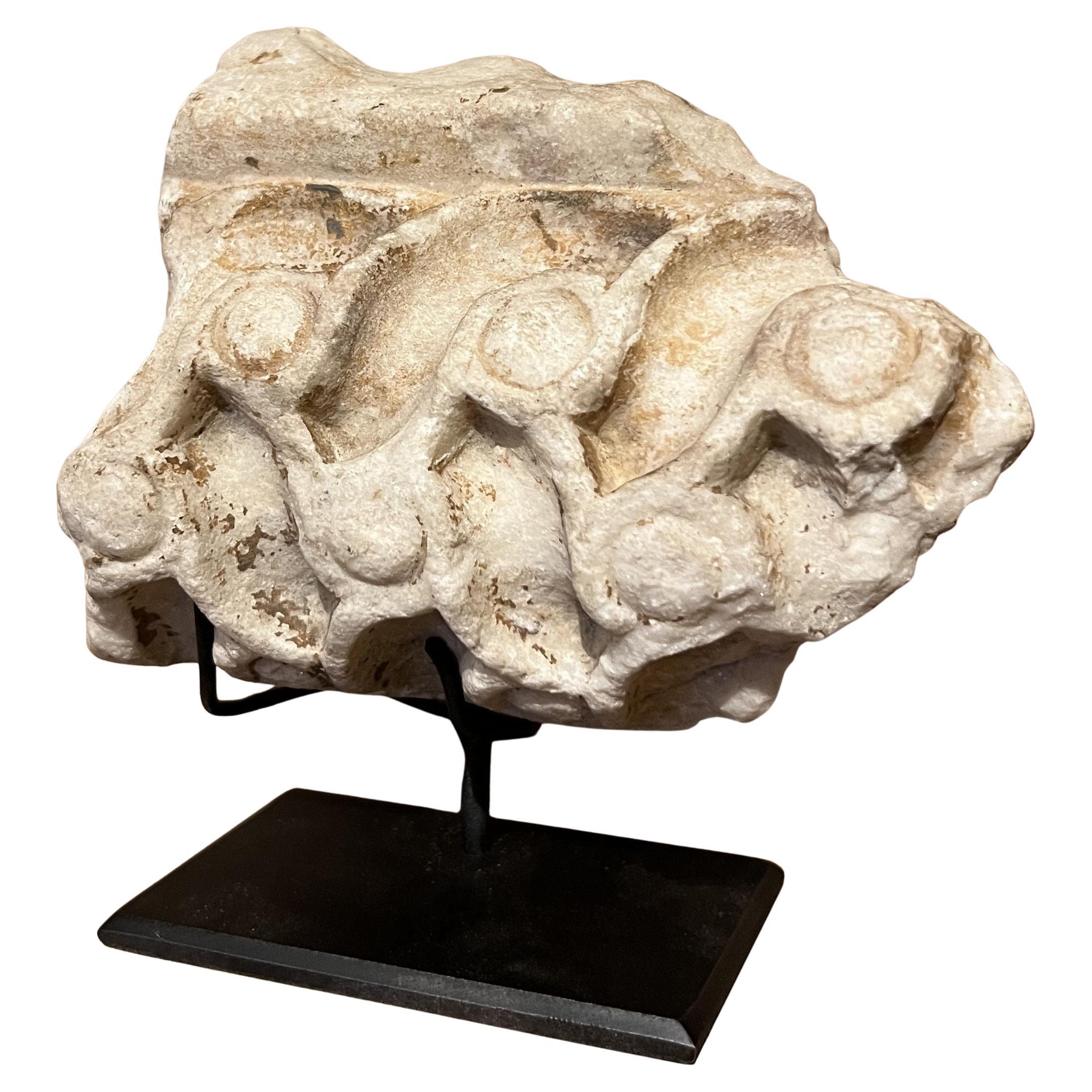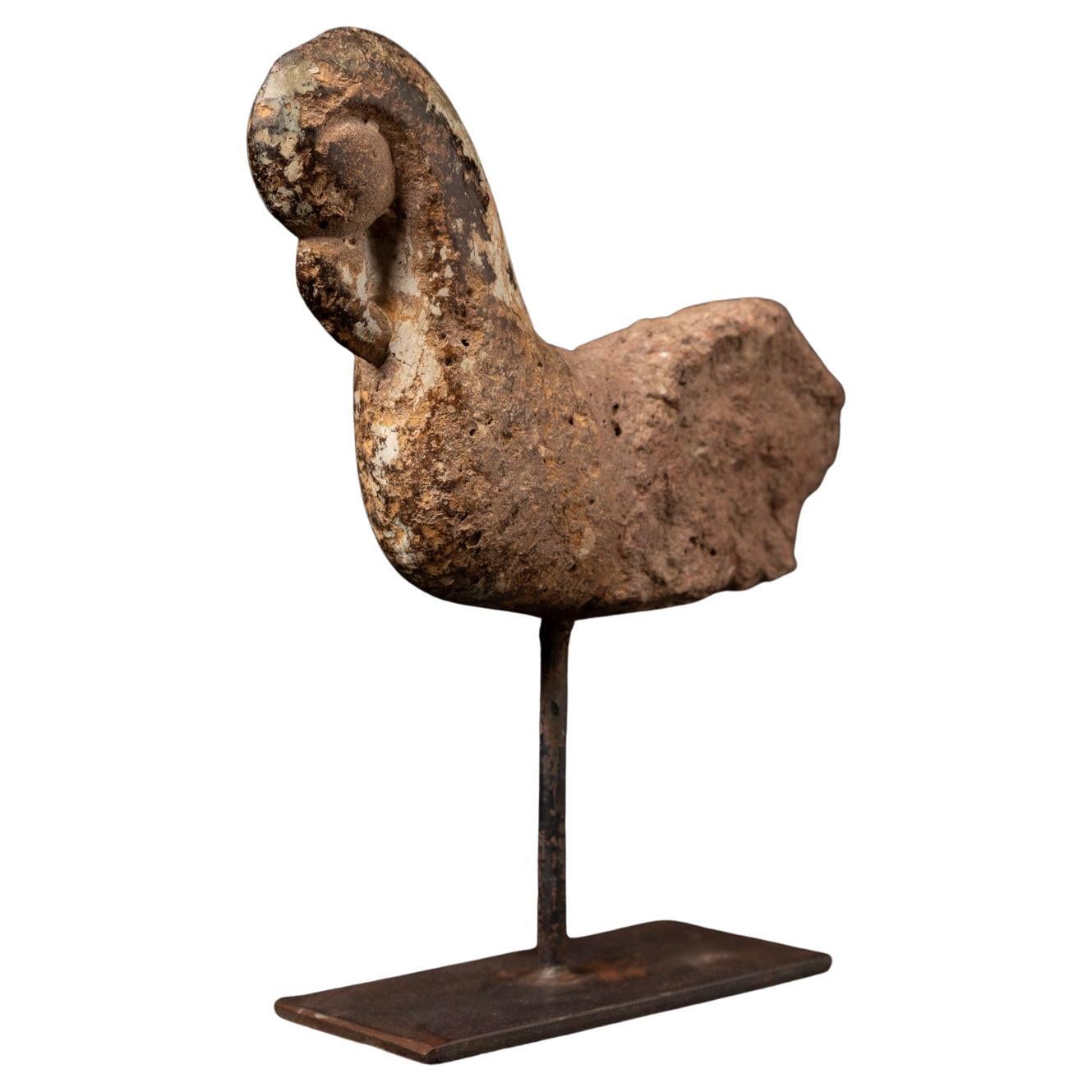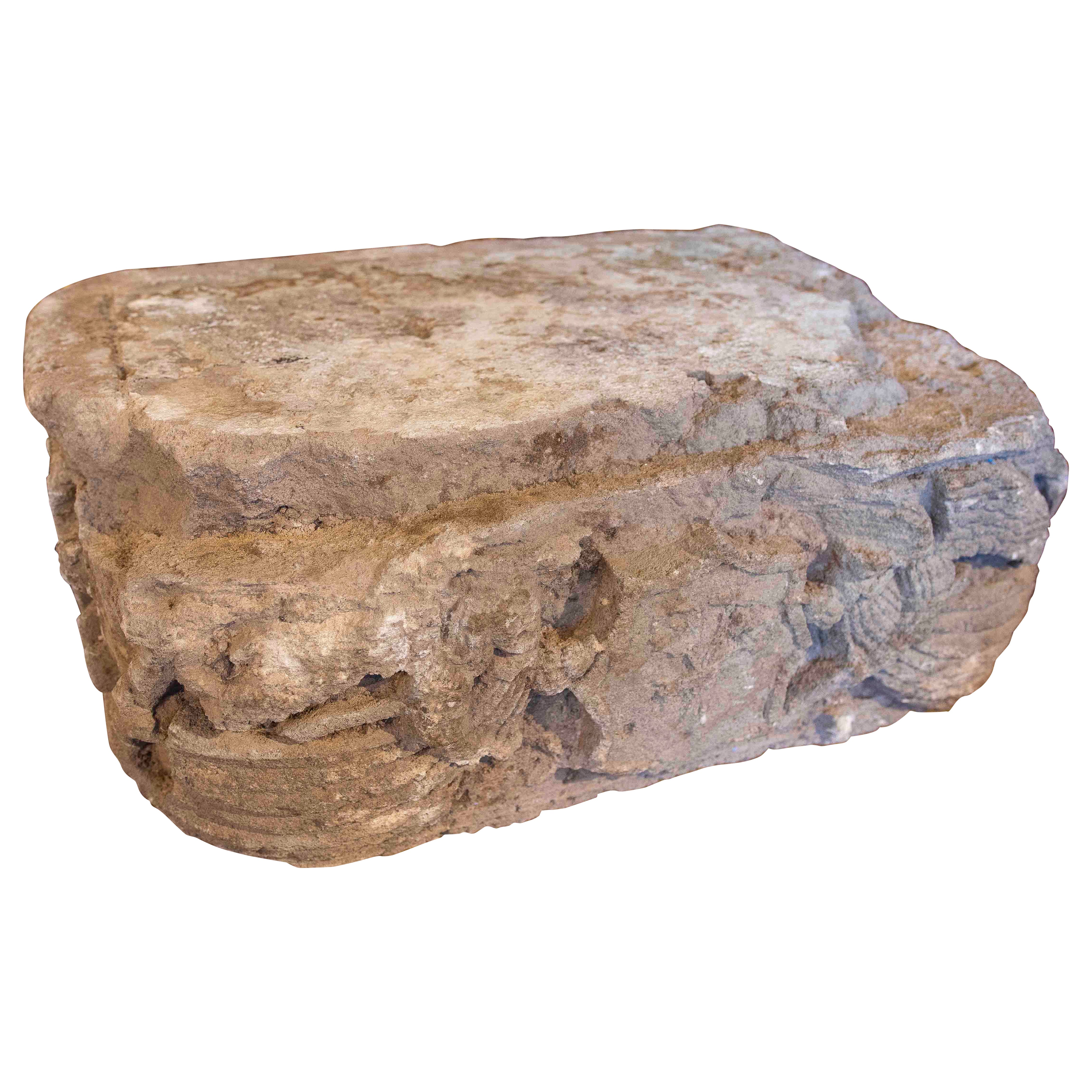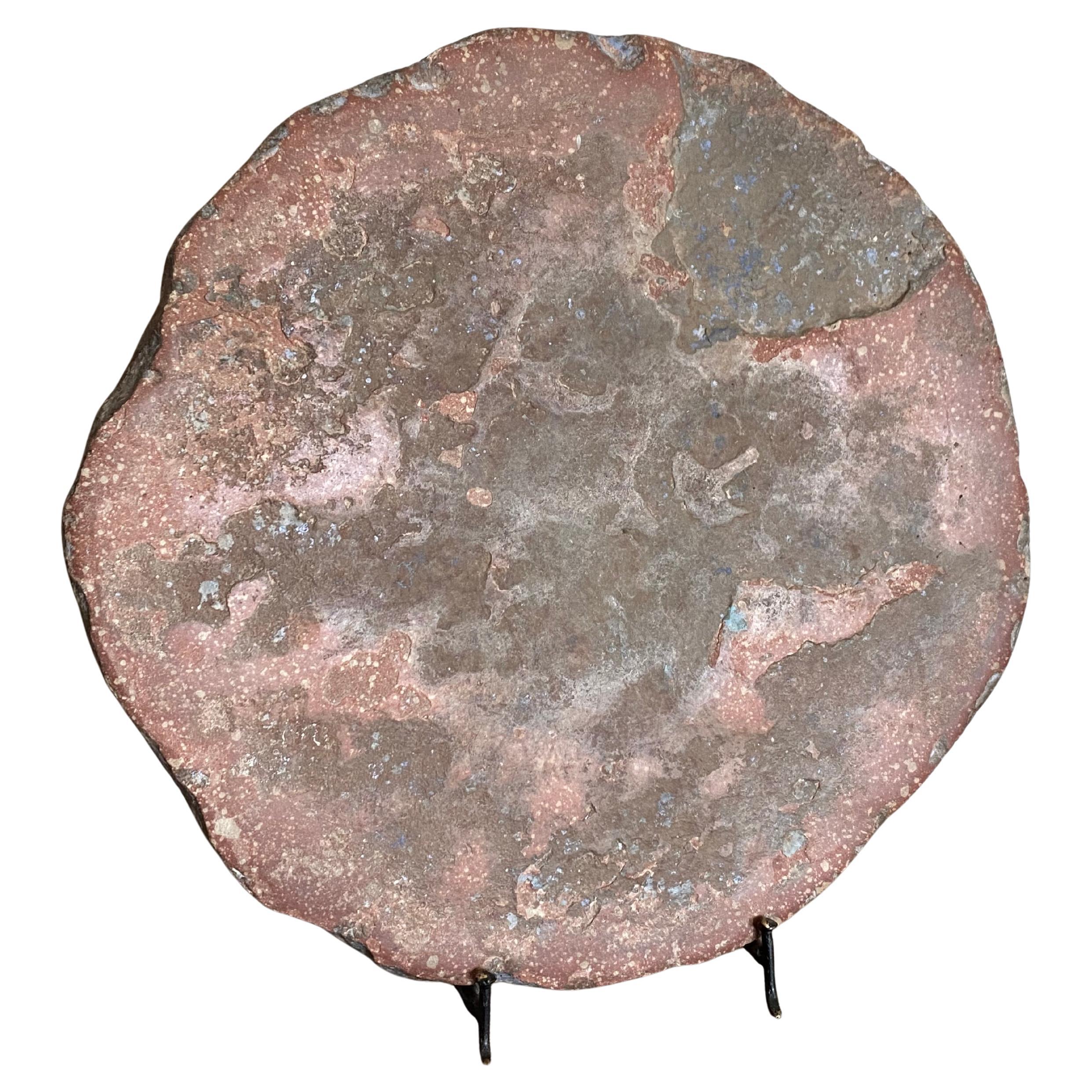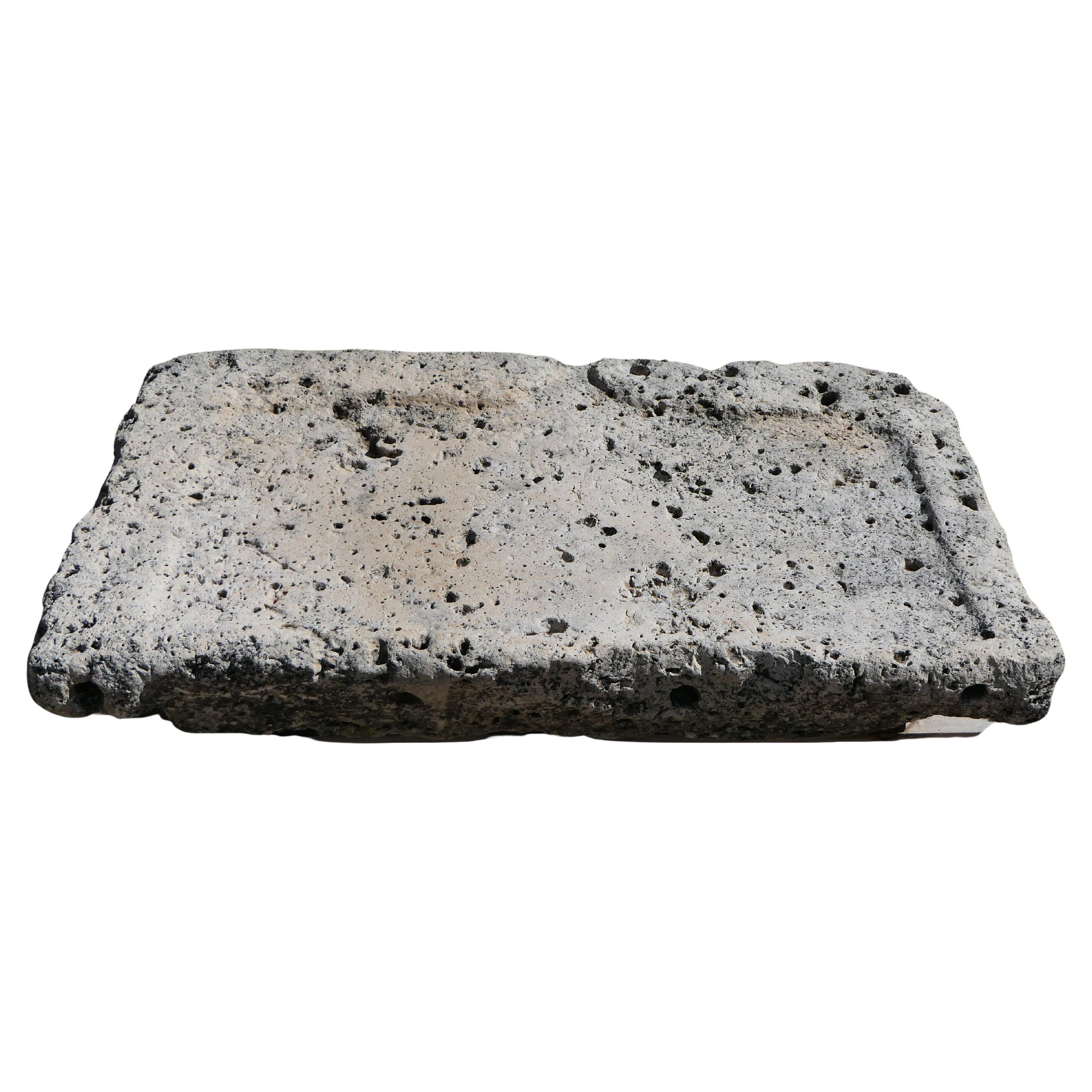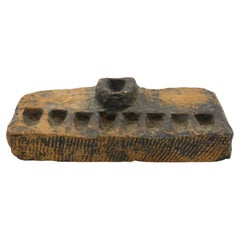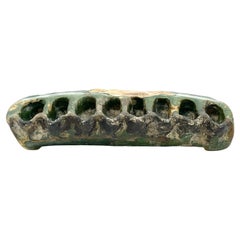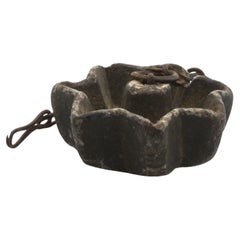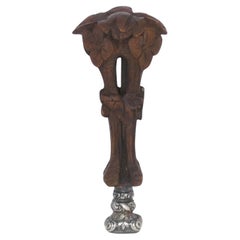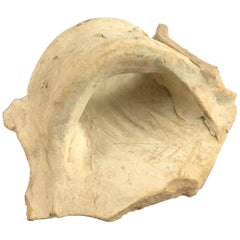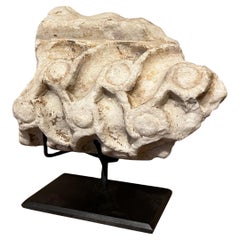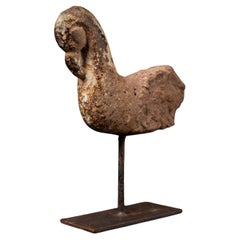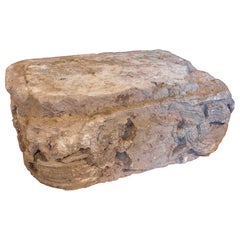Items Similar to A Rare Second Temple Period Limestone Table Fragment, Jerusalem, 1st Century BCE
Want more images or videos?
Request additional images or videos from the seller
1 of 9
A Rare Second Temple Period Limestone Table Fragment, Jerusalem, 1st Century BCE
$32,000
£24,246.95
€27,772.92
CA$45,324.39
A$49,459.42
CHF 25,942.30
MX$600,701.21
NOK 324,033.60
SEK 306,227.96
DKK 207,286.59
About the Item
A Rare Second Temple Period Limestone Table Fragment – Featuring Lions of Judah – Jerusalem, Circa 1st Century BCE – 1st Century CE
A remarkably evocative artifact from the very heart of ancient Jewish history, this limestone table fragment dates to the Second Temple period and was discovered in Jerusalem, a city at the epicenter of Jewish spiritual and communal life. Carved from local Jerusalem limestone, this surviving piece once formed part of a rectangular table, likely used in a public or institutional setting, and stands as a rare witness to the art and symbolism of the period.
What distinguishes this fragment from other contemporaneous examples is the uncommon and powerful motif of lions prominently carved into its side. While other stone table tops from this era feature geometric designs, floral motifs, or abstract patterns, this is the only known example to depict lions, a potent emblem of Judah—the biblical tribe from which Jerusalem draws both its name and symbolic strength.
The lions are rendered in bold, stylized form, deeply incised into the stone surface, likely meant to project not only artistic elegance but also a symbolic assertion of power, sovereignty, and religious identity. In Jewish tradition, the lion is the symbol of Judah, from whom King David descended and whose tribal territory encompassed Jerusalem. The presence of this motif suggests a deep-rooted association between the artifact and the civic or religious leadership of the city.
According to the prominent archaeologist Prof. Nachman Avigad, this table fragment may have belonged to the Jerusalem council at the time—used in a public setting, possibly for administrative, ceremonial, or communal purposes. Its craftsmanship and iconography point to an object of high status, intended for official or sacred use during the final generations of the Second Temple era.
Such finds are extraordinarily rare, especially with figural decoration, given the aniconic tendencies in Jewish art of the period. This fragment thus represents not only a significant archaeological discovery but a rare glimpse into the civic-religious symbolism and aesthetic culture of Jerusalem on the eve of its destruction in 70 CE.
Provenance: Excavated in Jerusalem, exact location and context documented in scholarly records.
Material: Local limestone
Dating: Second Temple Period, 1st century BCE–1st century CE
Motif: Lions of Judah, symbolizing sovereignty, Jerusalem, and the Davidic lineage
Attribution: Prof. Nachman Avigad (regarding possible function and ownership)
An object of profound historical and symbolic resonance—a literal piece of Jerusalem.
- Dimensions:Height: 2.09 in (5.3 cm)Width: 7.09 in (18 cm)Depth: 5.12 in (13 cm)
- Materials and Techniques:Limestone,Hand-Carved
- Place of Origin:
- Period:
- Date of Manufacture:1st Century BCE
- Condition:Wear consistent with age and use.
- Seller Location:New York, NY
- Reference Number:1stDibs: LU5281244679022
About the Seller
5.0
Recognized Seller
These prestigious sellers are industry leaders and represent the highest echelon for item quality and design.
Established in 2006
1stDibs seller since 2020
140 sales on 1stDibs
Typical response time: 7 hours
- ShippingRetrieving quote...Shipping from: Pomona, NY
- Return Policy
Authenticity Guarantee
In the unlikely event there’s an issue with an item’s authenticity, contact us within 1 year for a full refund. DetailsMoney-Back Guarantee
If your item is not as described, is damaged in transit, or does not arrive, contact us within 7 days for a full refund. Details24-Hour Cancellation
You have a 24-hour grace period in which to reconsider your purchase, with no questions asked.Vetted Professional Sellers
Our world-class sellers must adhere to strict standards for service and quality, maintaining the integrity of our listings.Price-Match Guarantee
If you find that a seller listed the same item for a lower price elsewhere, we’ll match it.Trusted Global Delivery
Our best-in-class carrier network provides specialized shipping options worldwide, including custom delivery.More From This Seller
View AllA Stone Hanukkah Lamp, Jerusalem or Yemen Circa 1900
Located in New York, NY
A Stone Hanukkah Lamp dating back to around 1900 and originating from either Jerusalem or Yemen represents a significant artifact with both religious and cultural importance.
A Hanu...
Category
Antique Early 1900s Asian Candle Lamps
Materials
Stone
$2,880 Sale Price
20% Off
Late 18th Century Earthenware Hanukkah Lamp, Djerba, Tunisia
Located in New York, NY
A rare, late 18th century earthenware Hanukkah lamp from Djerba, Tunisia. Rectangular in shape, the Hanukkah lamp is supported by two legs. The oil fonts take the form of eight small recesses, with pinched edges on one side for wicks. Apparently, a servant light (now missing) was placed in the upper part of the lamp.
This is a particularly rare and early specimen. In all likelihood, this model – undocumented in the literature – represents a missing link between the stone lamps used in North Africa and the more familiar earthenware lamps of Tunisia, which are generally glazed in a greenish hue (in similar fashion to the present lamp). But in the latter group, the oil fonts are elevated, that is, supported on top of small columns, and are similar in design to ancient earthenware...
Category
Antique Late 18th Century Tunisian Primitive Religious Items
Materials
Earthenware
$1,560 Sale Price
83% Off
A Carved Stone Shabbat Lamp, Yemen Circa 1900
Located in New York, NY
A Carved Stone Shabbat Lamp made in Yemen circa 1900 is an important artifact that reflects the religious traditions of Yemeni Jewish communities during that period.
In Yemeni Jewi...
Category
Antique Early 1900s Yemeni Candle Lamps
Materials
Stone
$960 Sale Price
20% Off
An Antique American Hand-Carved Wood and Silver Seal
Located in New York, NY
A rare and beautifully crafted example of early American Judaica, this hand-carved wood and silver seal is notable for its exceptional artistry and symbolic detail. The prominent han...
Category
Early 20th Century American Historical Memorabilia
Materials
Silver
$4,000 / item
An Early 20th Century Yemenite Carved Stone Shabbat Lamp
Located in New York, NY
An Early 20th Century Yemenite Shabbat Lamp is a distinctive piece of Judaica that embodies the artistic traditions and cultural synthesis of Yemenite Jewish communities during that ...
Category
Early 20th Century Yemeni Candle Lamps
Materials
Stone
$2,080 Sale Price
20% Off
An Antique Polish Lead Amulet
Located in New York, NY
This intriguing antique lead amulet, discovered in Poland after decades underground, bears the mysterious marks of its long burial, with many of its original designs now softened and...
Category
Antique 19th Century Polish Religious Items
Materials
Lead
You May Also Like
Roman Clay Jar Handle Fragment
Located in Miami, FL
Roman clay fragment, this is the remains of the jar handle.
This fragment was found in one of France's oldest ports, Fos-sur-Mer, not far from Arles whe...
Category
Antique 15th Century and Earlier French Jars
Materials
Clay
Architectural roman fragment frieze
Located in Vosselaar, BE
A late roman, Byzantine, frieze fragment. Border fragment with carved ledge and D-section rim with carved running guilloche motifs in high relief.
Beautiful example of the elegant mi...
Category
Antique 15th Century and Earlier Architectural Elements
Materials
Marble
17th century Antique stone temple fragment - OriginalBuddhas
Located in DEVENTER, NL
Unearth the ancient whispers of India’s sacred architecture with this Antique stone temple fragment, a 17th-century relic (or possibly older) that carries the spiritual essence and artistry of a bygone era. Carved from natural stone, this enigmatic fragment measures 27.9 cm high, 7.5 cm wide, and 23.2 cm deep, its weathered surfaces etched with traces of intricate motifs—perhaps floral patterns, divine figures, or celestial symbols—that once adorned a grand Hindu or Jain temple.
Originating from India, where temple construction flourished under dynastic patronage, this piece reflects the mastery of stonemasons who transformed rugged stone into narratives of devotion, likely part of a pillar, frieze, or sanctum wall. Weighing 2.1 kgs, its compact yet evocative form bears the patina of centuries, with softened edges and mineral deposits that testify to exposure to the elements and ritual use. The fragment’s abstract geometry and symbolic carvings hint at its original context, whether depicting deities like Shiva, Vishnu, or Tirthankaras, or cosmic themes central to Indian spirituality. Created during a period of architectural splendor under empires like the Mughals or regional kingdoms, it bridges the tangible and the divine, offering a tactile link to India’s temple...
Category
Antique 17th Century Indian Sculptures and Carvings
Materials
Stone
18th Ancient Architectural Fragment in Carved Stone with Sculptural Decoration
Located in Marbella, ES
A magnificent ancient architectural fragment in carved stone, rectangular in shape and with a robust surface that shows signs of erosion typical of the passage of time. The sides are...
Category
Antique 18th Century Spanish Architectural Elements
Materials
Stone
Sculpted Tablet On Base
Located in Nijlen, BE
Sculpted natural stone tablet on base.
Beautiful on a custom tripod with an antique character.
A stone that has in its natural palette, shades of pink, blue and gray-brown. A true pa...
Category
Vintage 1940s French Minimalist Natural Specimens
Materials
Stone
$2,217
Early Hand-Carved Stone Sink – Exceptional Weathered Surface
Located in COULLONS, FR
This exceptional antique stone sink, hand-carved from solid natural stone, features a richly textured surface and an extraordinary natural patina acquired over centuries.
Its weather...
Category
Antique 18th Century French Stone Sinks
Materials
Stone, Limestone
More Ways To Browse
Jerusalem Furniture
Antique Furniture Israel
Carved Limestone Table
Second Hand Furniture
Temple Jerusalem
Antique 15th Century Table
Stone Table Tops
Hand Carved Israel
John Adams President
Police Memorabilia
Shell Casing Trench Art
Space Age Tv
T C F Co Antique Furniture
Texas Republic
Vintage Oil Can
Wine Memorabilia
Antique Barber Collectibles
Antique Ford Model T

